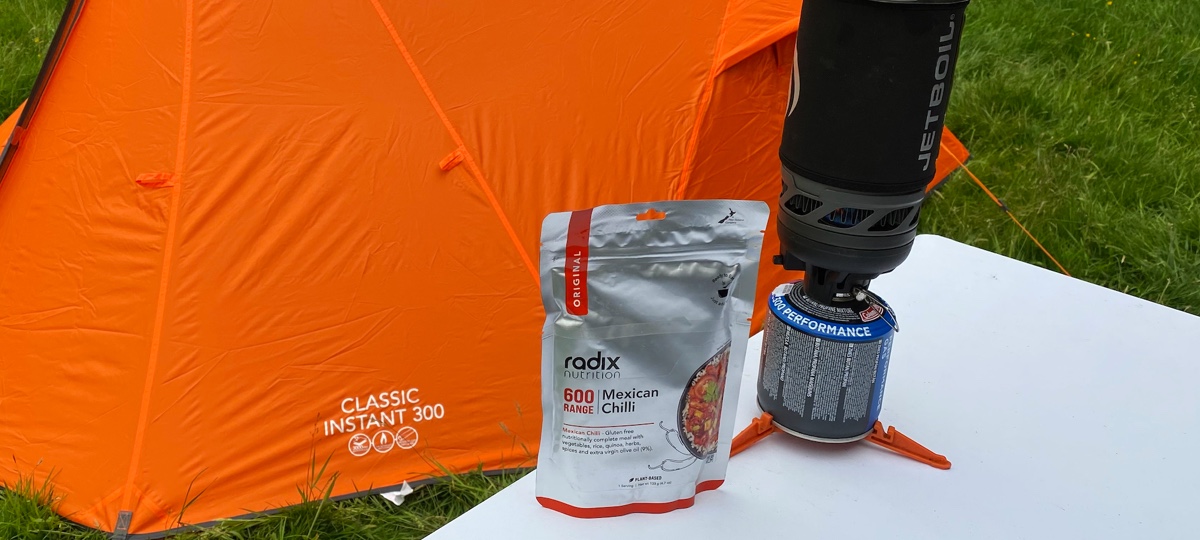Advnture Verdict
There are four main things to consider when it comes to buying pre-prepared meals for camping, trekking, backpacking and bikepacking: weight; ease of preparation; nutrition value; taste. On all four counts, Radix Nutrition meals score top marks – but especially that crucial last one. Made with a massive mix of real foodstuff (including loads of actual fruit and veg) they dish up more flavor (and fiber) than I have ever encountered in camping meals before. And the packaging is ingenious, transforming into a bowl when you’re ready to tuck in.
Pros
- +
Full of real food and super tasty
- +
Lightweight
- +
Highly nutritious
- +
Quick and easy to prepare
- +
Packets are resealable, recyclable and also transform into bowls
- +
Entirely plant-based and gluten free
- +
Different sizes available
Cons
- -
Committed carnivores will bemoan the lack of beast
You can trust Advnture
Radix Nutrition backpacking meals: first impressions
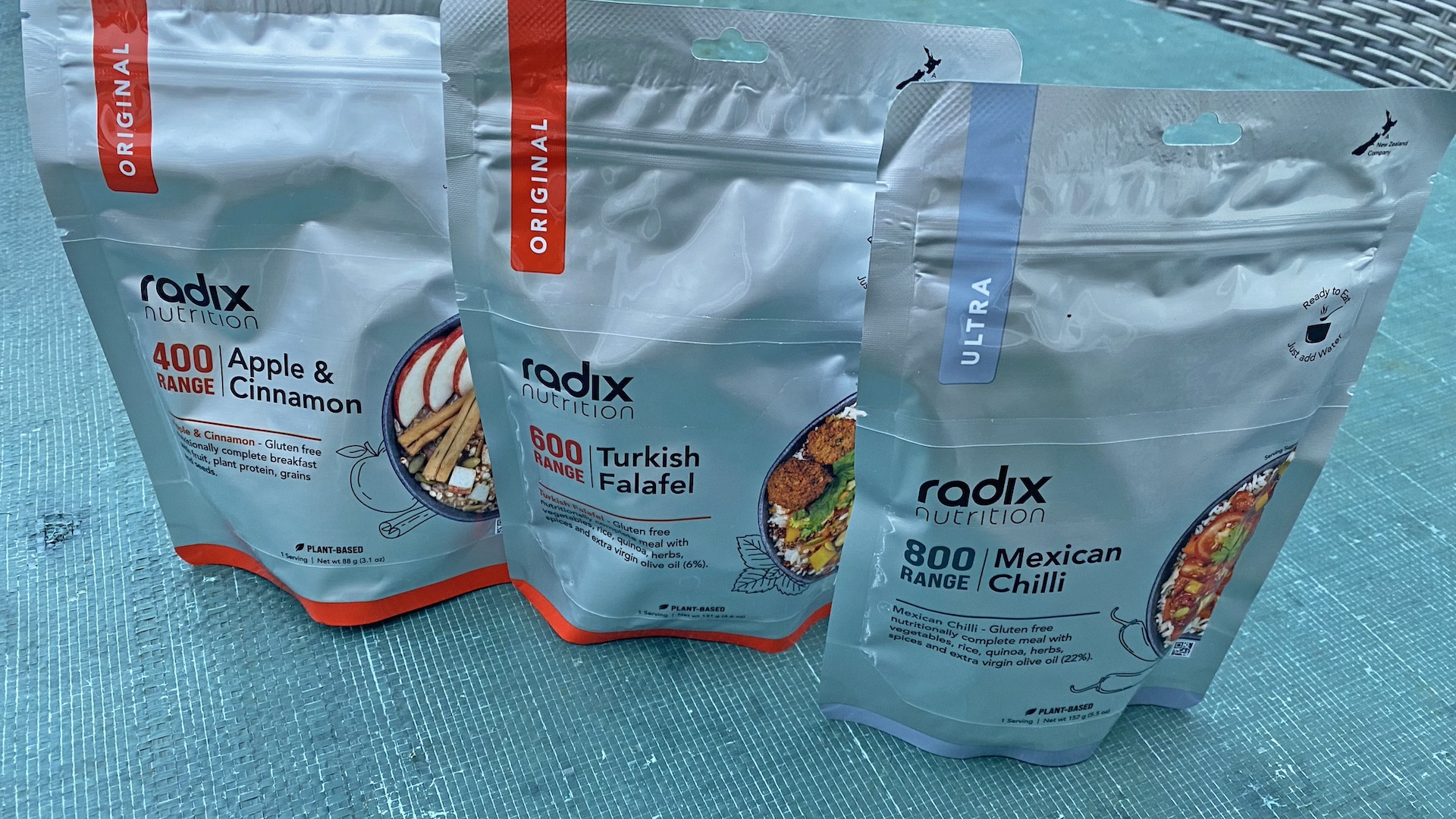
I’d heard and read really good things about the Radix Nutrition range of freeze-dried camping meals for backpackers and bikepackers, so I was excited to get stuck into the large menu of tasty sounding dishes offered by the Kiwi company.
• List price (pack of six of the 600 Range meals): $59 (US) / £51 (UK) / AU$69.90 (AU)
• Flavors: Indian Curry / Mexican Chilli / Turkish Falafel / Smokey Barbecue / Peri-Peri / Thai Green Curry (main meals); Mixed Berry / Apple & Cinnamon / Chocolate / Banana (breakfasts and desserts)
• Typical weight (per sachet, 600 Range): 133g / 4.7oz
In the outdoor world, many people (myself included) have a love-hate relationship with pre-prepared camping foods. Everyone has had a few bad experiences (generally involving disappointment rather than anything more serious) and – similar to the way runners regard gels and nutrition bars – these sachet servings are often considered a necessary evil by backpackers, fastpackers and bikepackers, who use them not for their delicious taste, but because they’re a quick way of refueling when you most need it.
Shoving a few securely sealed sachets of balanced nutrition in your hiking backpack, running pack or frame bag is an awful lot easier than the alternative: making your own easy-to-carry meals. Dehydrated and freeze-dried food products are very quick and simple to prepare once you’ve pitched your tent and rolled out your camping mat and sleeping bag: just spark up your camping stove, boil some water, add it to the mix then wait for a few minutes and… boom! It’s dinnertime.
There are drawbacks, of course. A big one is price. Convenience comes at a cost, and these ready-made meals will set you back 10 or 20 times as much as you could get away with spending if you bought your own lightweight-but-carb-loaded base ingredient (pasta, lentils, polenta, couscous, tapioca) and threw in enough morsels to bring vitamins and protein to the party. But to make something that truly serves your nutrition needs and offers reasonable amounts of flavor, while remaining lightweight enough to cart around out on the trail, you would have to invest quite a bit of thought and planning time.
Suffice to say, it’s always worth having a stash of pre-prepared sachets somewhere you can grab them, for when you next want to hit the trail and go on an adventure. But only if they’re tasty and nutritious. Would the Radix Nutrition meals hit the spot, and how do they compare to the best freeze-dried food on the market? There was only one way to find out.
Radix Nutrition backpacking meals: ingredients and portions
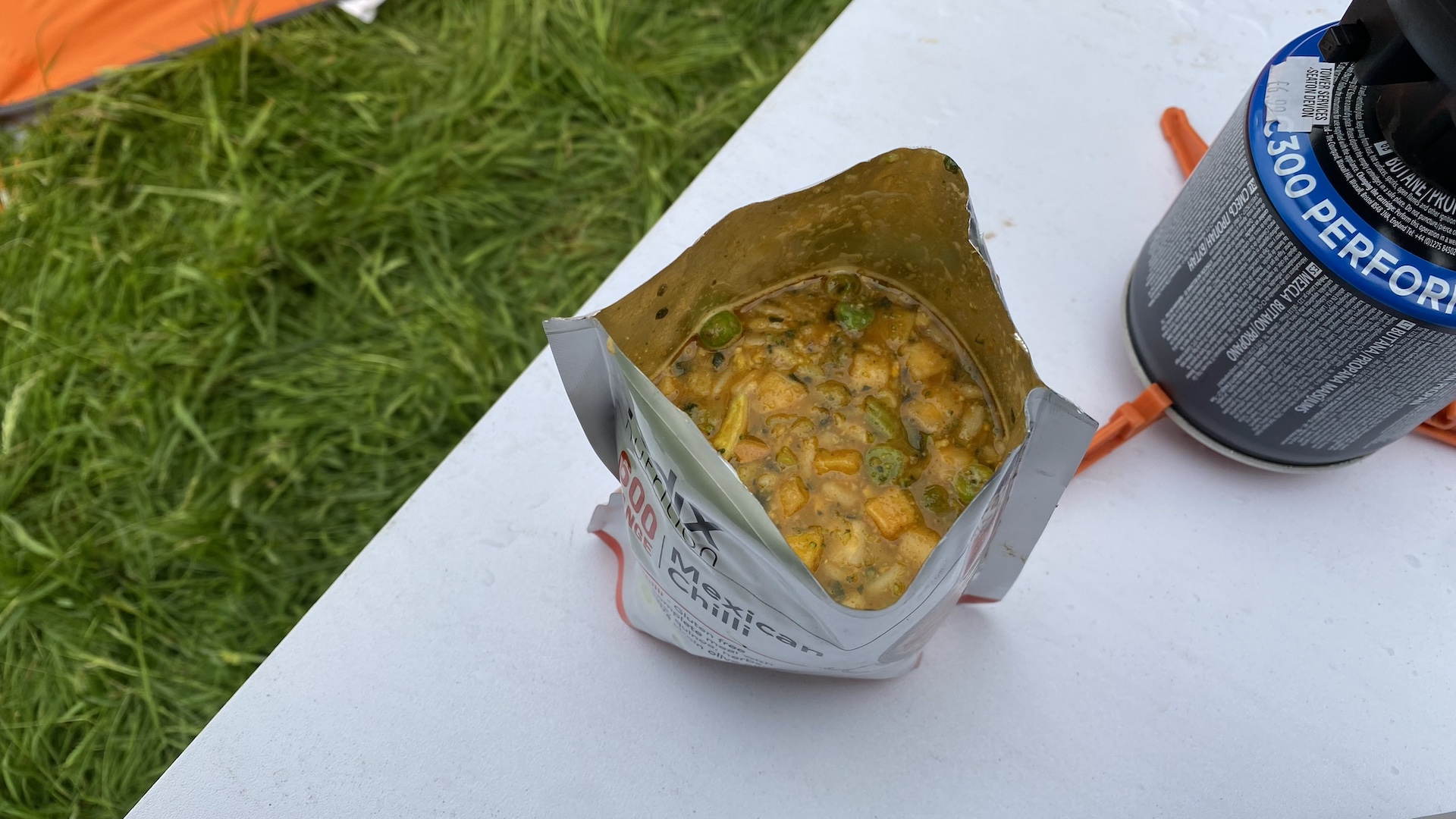
Radix Nutrition offer an extremely eclectic selection, ranging from Mixed Berry and Apple & Cinnamon breakfasts, through to main meals such as Indian Curry, Mexican Chilli and Turkish Falafel, and include sweet options too. There are a few common denominators, though: they are all entirely plant based – so vegans and vegetarians can tuck into all of the products without worrying – and they are all gluten free. Most of the mains also contain goodness such as omega-3 and omega-6, and at least two of your recommended five-a-day portions of vegetables or fruit.
Instead of claiming to be large enough for one or two servings, like some other camping foods do, the Radix Nutrition meals come in three sizes: 400, 600 and 800. The numbers relate to the amount of calories the content contains, with the 400 range representing a light breakfast or lunch, the 600 ‘Original’ range being a standard-portion main meal, and the 800 ‘Ultra’ range aimed at people engaged in high-intensity adventures such as long-distance multi-day hikes, demanding bikepacking escapades and mountaineering expeditions.
Meet the reviewer

Pat has hiked all over the world, his adventures taking him to Mont Blanc, the roof of Western Europe; the Norwegian Alps; the highest peaks in Australia; and New Zealand’s Great Walks – among others. He also spends plenty of nights under canvas to put camping gear to the test.
Radix Nutrition backpacking meals: on the trails
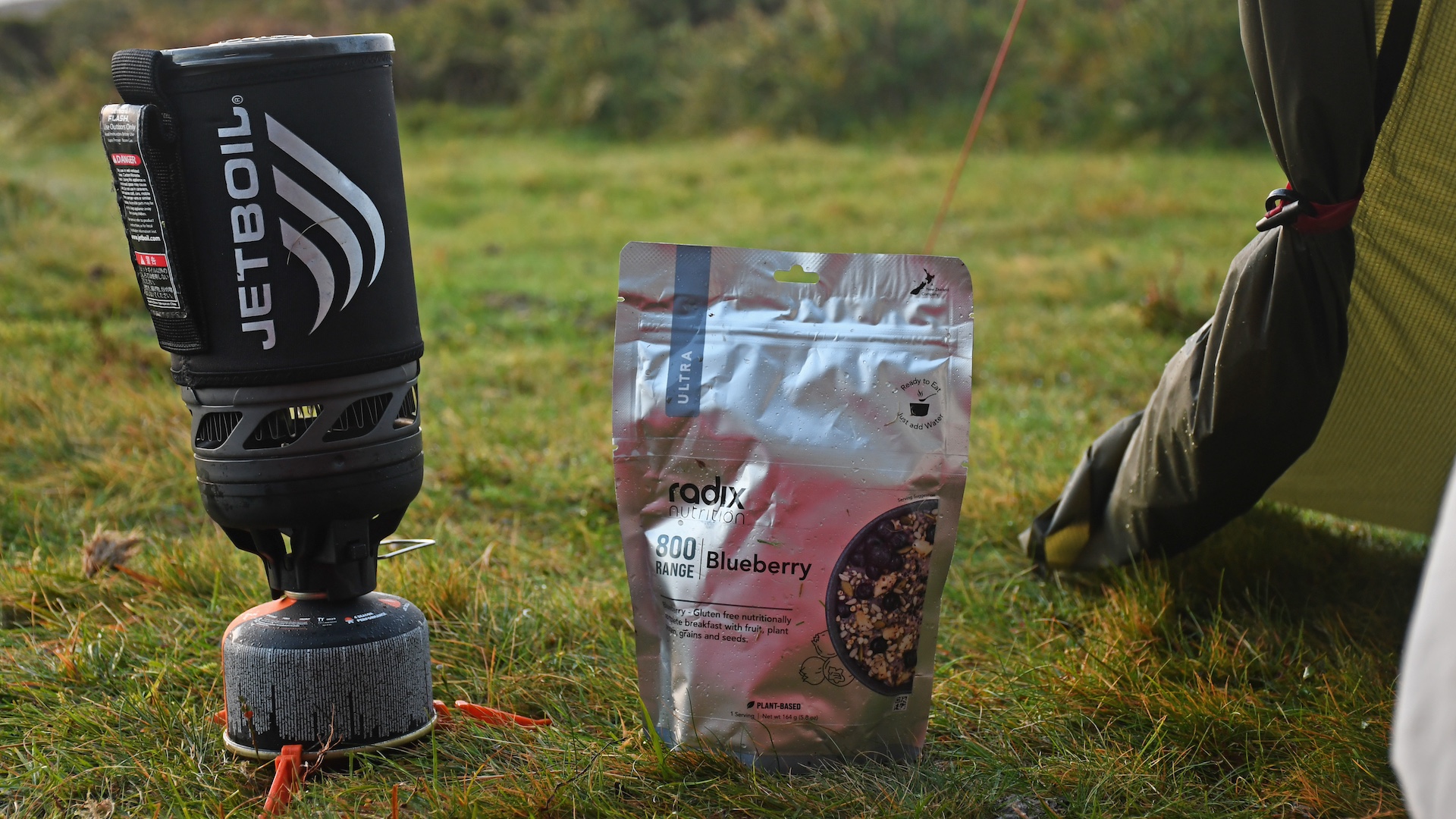
I’ve been tucking into Radix Nutrition meals across much of the summer and into fall, during all sorts of backpacking and bikepacking trips. The first thing to say is that the sachets are very easy to pack and carry – but that is pretty much true of all dehydrated and freeze-dried meals designed for backpackers; it’s literally the main reason they exist, so I was looking for a lot more than that.
I am a notoriously hungry man, and have often been left deeply unsatisfied by other camping meals that have claimed to be big enough for one person (pah!) or when sharing those supposedly sufficient for two (cue tent tantrums!). I much prefer the way Radix Nutrition have classified their portion sizes by the calorie payload, and I’ve found they accurately reflect what I need in terms of intake. A meal from the 600 range has been adequate after a couple of hours’ hiking or biking, whereas I have required a bigger serving from the 800 range after spending a really big day trekking trails, climbing peaks or pedalling lumpy off-road routes. After each, I’ve felt full, and been adequately fuelled-up to face another day of adventuring.
When you look at the back of the packet, the list of ingredients on all of the Radix Nutrition main meals reads like a James Joyce novel, but pleasingly, it all sounds like real food – not numbers representing colorings and additives. As a direct consequence, the flavors are the best and most natural I’ve ever experienced from eating freeze-dried food. With other brands’ meals, I’ve resorted to carrying extra condiments (sachets of soy sauce, ginger, mustard or ketchup – I’ve even trekked with bottles of Tabasco), but these meals don’t need to be pimped.
As a veggie, I’m bit biased, but I don’t think even the most committed carnivore will whine too much about missing out on some scraps of reconstituted meat once they realize more flavorsome ingredients have been included instead.
As mentioned above, Radix say each of the main meals contains two of your recommended five-a-day doses of vegetables or fruit, and I do think there’s more vitamin goodness and fiber content in these meals than I’ve found in other brands’ offerings. I once spent an entire week eating only dehydrated/freeze-dried foods, designed for backpacking, and that can do terrible things to your system – trust me… Suffice to say, it’s usually a very good idea to supplement them with some real fruits and other high-fiber foodstuffs, but here I felt I was getting pretty much what I needed.
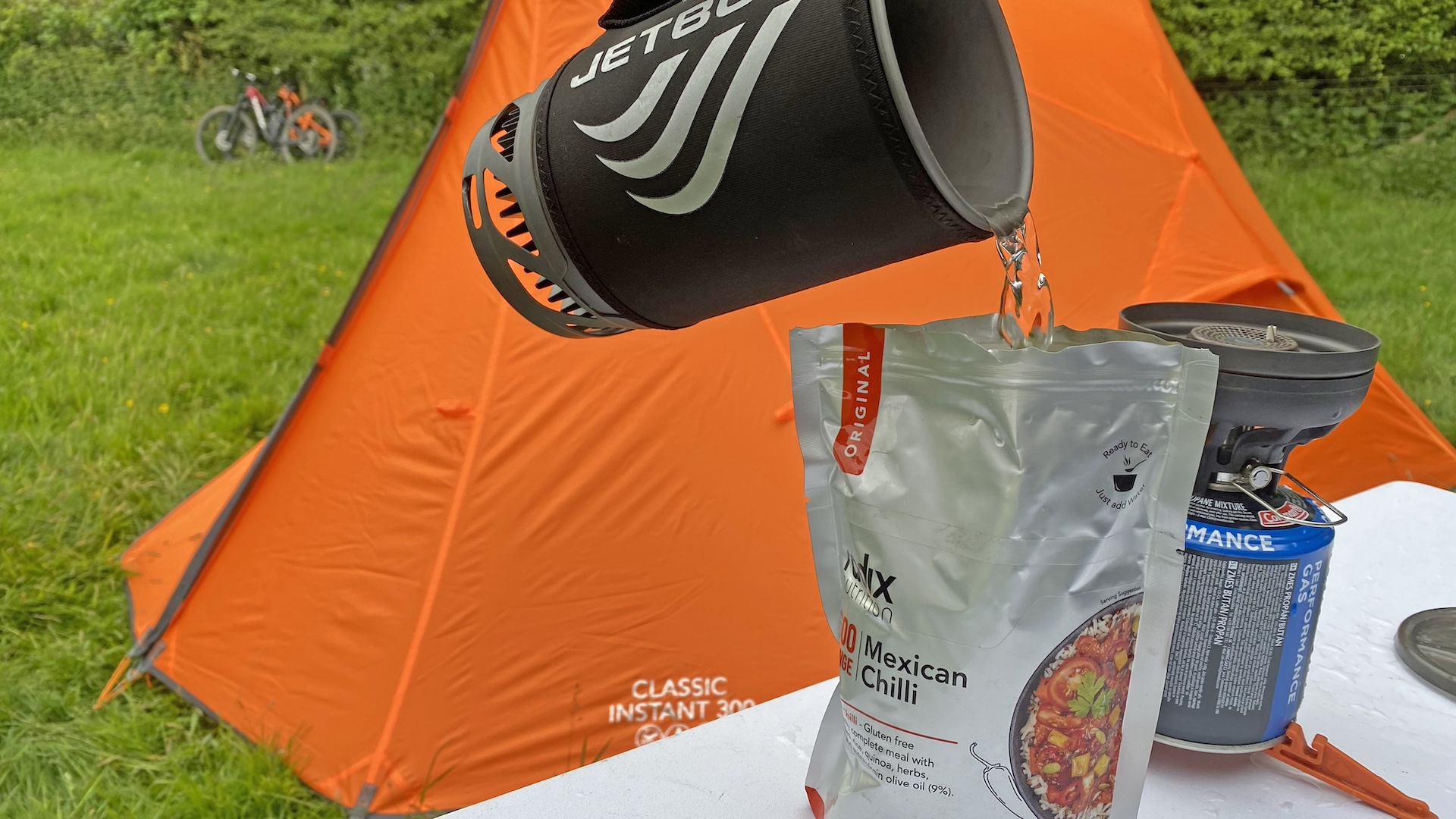
The design of the packaging is very smart too, and cuts down on the need to carry much in the way of camping utensils if you’re really trying to save weight and space. You rip the top strip off to open the sachet, add the requisite (or desired) amount of water and then seal the packet until the moisture has soaked in. Then – and this is the innovative bit – you can tear another section off to end up with a bowl that you can easily eat the food directly from with a standard spork, without getting the sleeves of your base layer, fleece or puffer jacket covered in food. Brilliant.
I’ve tried almost the entire range now, and I genuinely don’t have many grumbles. The problem with most dehydrated and freeze-dried foods is that, once you rehydrate them, they look like something a cat has brought up. Sadly, this is still the case with the Radix Nutrition meals, but that’s hardly a valid criticism – I don’t think there’s any way you could make pre-prepared camping food look appealing, and presentation is right at the bottom of the priority and importance list.
One consideration is that the meals are all made in New Zealand, which is rather a long way from almost everywhere, so there is a carbon footprint involved in transporting this product. That said, there are distributors in the US, the UK, Europe and elsewhere, and the shelf life of freeze-dried food can be counted in decades, so the meals are shipped in bulk – they’re not flown around the world in small batches when you buy them.
Lastly, while the packaging isn’t recycled curbside (and the relevant website printed on the products relates to New Zealand only), you can clean and dispose of the empty sachets in soft-plastic recycling areas in places like supermarkets.

Author of Caving, Canyoning, Coasteering…, a recently released book about all kinds of outdoor adventures around Britain, Pat has spent 20 years pursuing stories involving boots, bikes, boats, beers and bruises. En route he’s canoed Canada’s Yukon River, climbed Mont Blanc and Kilimanjaro, skied and mountain biked through the Norwegian Alps, run an ultra across the roof of Mauritius, and set short-lived records for trail-running Australia’s highest peaks and New Zealand’s Great Walks. He’s authored walking guides to Devon and Dorset, and once wrote a whole book about Toilets for Lonely Planet. Follow Pat’s escapades on Strava here and Instagram here.
